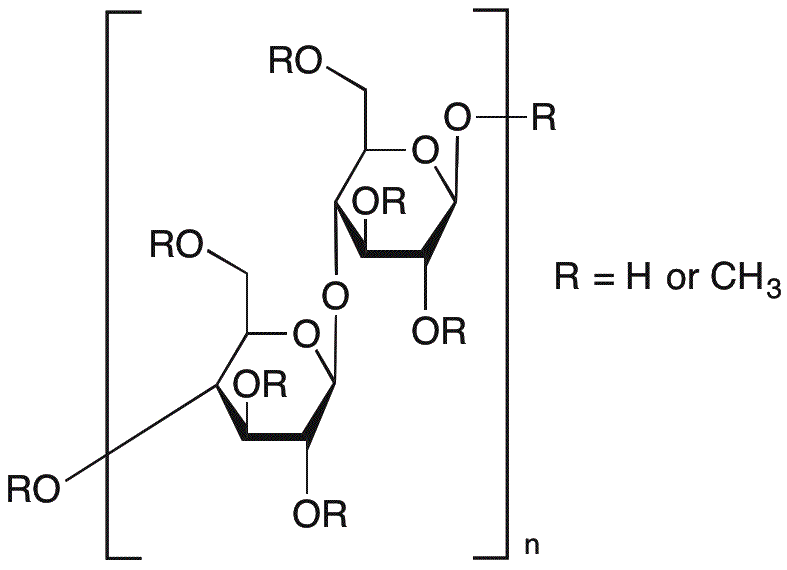Methyl cellulose is widely utilized in research focused on:
- Food Industry: As a thickening and stabilizing agent, it enhances the texture and consistency of various food products, including sauces and dressings, improving mouthfeel without adding calories.
- Pharmaceuticals: Used as a binder in tablet formulations, it ensures uniform distribution of active ingredients, enhancing drug efficacy and stability.
- Cosmetics: Acts as a film-forming agent in lotions and creams, providing a smooth application and enhancing moisture retention, which is crucial for skin health.
- Construction: Serves as an additive in cement and plaster, improving workability and adhesion, which leads to stronger and more durable building materials.
- Biotechnology: Employed in cell culture media, it provides a supportive environment for cell growth, making it essential for research in tissue engineering and regenerative medicine.
General Information
Properties
Safety and Regulations
Applications
Methyl cellulose is widely utilized in research focused on:
- Food Industry: As a thickening and stabilizing agent, it enhances the texture and consistency of various food products, including sauces and dressings, improving mouthfeel without adding calories.
- Pharmaceuticals: Used as a binder in tablet formulations, it ensures uniform distribution of active ingredients, enhancing drug efficacy and stability.
- Cosmetics: Acts as a film-forming agent in lotions and creams, providing a smooth application and enhancing moisture retention, which is crucial for skin health.
- Construction: Serves as an additive in cement and plaster, improving workability and adhesion, which leads to stronger and more durable building materials.
- Biotechnology: Employed in cell culture media, it provides a supportive environment for cell growth, making it essential for research in tissue engineering and regenerative medicine.
Documents
Safety Data Sheets (SDS)
The SDS provides comprehensive safety information on handling, storage, and disposal of the product.
Product Specification (PS)
The PS provides a comprehensive breakdown of the product’s properties, including chemical composition, physical state, purity, and storage requirements. It also details acceptable quality ranges and the product's intended applications.
Certificates of Analysis (COA)
Search for Certificates of Analysis (COA) by entering the products Lot Number. Lot and Batch Numbers can be found on a product’s label following the words ‘Lot’ or ‘Batch’.
Numéro de catalogue
Numéro de lot/série
Certificates Of Origin (COO)
This COO confirms the country where the product was manufactured, and also details the materials and components used in it and whether it is derived from natural, synthetic, or other specific sources. This certificate may be required for customs, trade, and regulatory compliance.
Numéro de catalogue
Numéro de lot/série
Safety Data Sheets (SDS)
The SDS provides comprehensive safety information on handling, storage, and disposal of the product.
DownloadProduct Specification (PS)
The PS provides a comprehensive breakdown of the product’s properties, including chemical composition, physical state, purity, and storage requirements. It also details acceptable quality ranges and the product's intended applications.
DownloadCertificates of Analysis (COA)
Search for Certificates of Analysis (COA) by entering the products Lot Number. Lot and Batch Numbers can be found on a product’s label following the words ‘Lot’ or ‘Batch’.
Numéro de catalogue
Numéro de lot/série
Certificates Of Origin (COO)
This COO confirms the country where the product was manufactured, and also details the materials and components used in it and whether it is derived from natural, synthetic, or other specific sources. This certificate may be required for customs, trade, and regulatory compliance.


